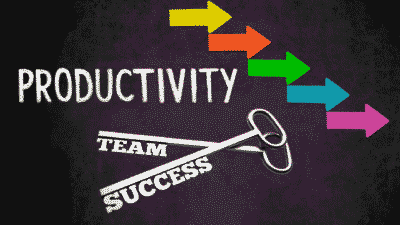A staggering 86% of employees and executives cite a lack of effective collaboration or communication as the root cause of workplace failures.This isn’t just about missed emails or unclear instructions; it’s a fundamental breakdown in the organizational nervous system that costs productivity, hinders growth, and erodes morale. For the advanced leader, the question isn’t if communication is important, but how to elevate it from a basic function to a strategic asset. This article moves beyond generic advice to provide actionable, sophisticated frameworks for you to truly improve workplace communication, transforming your team’s dynamic and driving measurable results. You will gain a significant advantage by implementing a structured, intentional approach to the flow of information, feedback, and ideas within your organization.
1. Beyond Surveys: Auditing Your Communication Ecosystem
Before you can improve workplace communication, you must first understand its current state with objective clarity. Annual surveys often capture sentiment but fail to map the actual flow of information. An advanced approach requires a more tactical audit.
1.1. Conducting a Practical Communication Process Audit
Instead of asking employees if they feel informed, map the journey of a critical piece of information. To do this, select a recent project or a key strategic decision. Then, trace its communication path:
- Origination: Where did the initial message or directive start?
- Transmission: What channels were used (e.g., email, team meetings, project management software)?
- Reception: Follow up with individuals at different levels. Ask them: “When and how did you first hear about Project X?” and “What was your understanding of its primary goal?”
- Distortion: Note where the message changed, was misinterpreted, or stalled completely.
This process reveals the functional reality of your communication network, highlighting bottlenecks and broken links that a simple survey would miss. For instance, you might discover that while senior management believes a message was cascaded, it never effectively reached frontline team members.
1.2. Identifying and Dismantling Information Silos
Information silos—where departments or teams withhold information from each other—are a common barrier to effective collaboration.They often arise not from malice, but from a lack of integrated processes.
To dismantle them, you can implement “cross-functional knowledge sharing” sessions. These are not informal mixers, but structured meetings where one team presents its current projects, challenges, and goals to another. For example, have the product development team present its roadmap to the customer support team. This proactive sharing ensures that the support team is prepared for future customer inquiries and can provide valuable frontline feedback to the developers. This transforms communication from a reactive necessity into a proactive, strategic tool.
2. The Art of Clarity: From Ambiguity to Action
Clarity is the bedrock of effective communication. For managers, this means ensuring that every instruction, goal, and piece of feedback is not only delivered but also understood as intended.
2.1. Adopting the “Commander’s Intent” Framework
A powerful concept borrowed from military strategy is the “Commander’s Intent.” Instead of only providing a detailed plan, a leader also clearly communicates the ultimate goal or the end state of the mission. This empowers team members to adapt and make independent, intelligent decisions when faced with unforeseen circumstances, as they understand the “why” behind their tasks.
Here is how you can apply this:
- When assigning a major task, don’t just list the steps.
- Start by stating the objective. For example: “The goal of this market analysis is to identify the top three risks to our Q4 launch so we can proactively develop mitigation strategies. That’s what success looks like.”
- This context allows your team to focus on the desired outcome, rather than just mechanically following a checklist.
2.2. Mastering Asynchronous Communication Protocols
In today’s global and hybrid work environments, not all communication is instantaneous. Asynchronous communication (email, project comments, shared documents) is dominant, yet it often lacks clear protocols, leading to delays and confusion.
To improve workplace communication in this context, establish and enforce clear standards:
- Define Channel Purpose: Specify what each tool is for. For instance:
- Email: For formal, external communication or detailed internal announcements.
- Project Management Tool (e.g., Asana, Trello): For all task-specific updates, questions, and file sharing.
- Instant Messaging (e.g., Slack, Teams): For urgent, quick questions that require a fast response.
- Set Response Time Expectations: Create clear guidelines, such as “All project management task comments will be acknowledged within 12 business hours.” This reduces the anxiety of waiting for a reply and allows people to manage their focus time better.
Visual Suggestion: A simple table comparing three communication channels (Email, Instant Messaging, Project Management Tool) and defining their Primary Use, Expected Response Time, and Best For categories.
3. How to Improve Workplace Communication with Active Engagement
Many communication issues stem not from what is said, but from what isn’t heard. Active listening and engagement are not soft skills; they are critical managerial competencies that prevent misunderstandings and build trust.
3.1. Moving from Hearing to Understanding
Active listening involves more than just staying silent while another person speaks. It is the disciplined act of concentrating, understanding, responding, and then remembering what is being said. A practical technique is “reflective feedback.” After a team member shares a complex idea or a concern, paraphrase it back to them.
For example: “So, if I am understanding correctly, your main concern is that the proposed deadline doesn’t account for potential supply chain delays, which could impact the final delivery date. Is that accurate?”
This simple act does two things:
- It confirms your understanding of the issue.
- It shows the employee that their perspective has been genuinely heard and valued.
3.2. Creating a Culture of Psychological Safety
Psychological safety is the shared belief that a team is safe for interpersonal risk-taking.Team members feel comfortable speaking up, asking questions, and admitting mistakes without fear of humiliation or punishment. It is arguably the most critical factor in fostering open and honest communication.
Here is a concrete step to build it: When a mistake occurs, frame the subsequent discussion around the process, not the person. Instead of asking, “Why did you miss the deadline?” ask, “What were the obstacles in the process that led to the deadline being missed, and how can we remove them for next time?” This shifts the focus from blame to collaborative problem-solving, encouraging team members to report issues early rather than hiding them.
A Short Scenario:
A project manager, Mr. Chen, noticed a critical error in a report submitted by a junior analyst, Omar. In a team meeting, instead of singling Omar out, Mr. Chen addressed the team: “I noticed an inconsistency in our latest performance report. This is a good opportunity for us to review our data verification process. Let’s walk through the steps together to see if we can make it more robust.” By doing this, he opened the door for Omar to explain where the process broke down without fear, and the entire team collaborated on a solution, strengthening their workflow for the future.
4. Leading by Example: The Manager’s Role in Communication
Ultimately, the quality of a team’s communication reflects the standards set by its leader. You must model the behavior you wish to see.
4.1. Embracing Transparency and Context
Employees are significantly more engaged and productive when they understand the reasons behind management decisions.Avoid communicating directives in a vacuum. Whenever possible, share the “why.”
For example, when announcing a change in a workflow, don’t just send an email with the new procedure. Explain the context: “We are implementing this new reporting system because it will automate data entry, reducing the time you spend on manual tasks by an estimated 20% and freeing you up for more analytical work. Our goal here is to improve efficiency and focus.”
4.2. Soliciting and Acting on Feedback
Two-way communication is essential. You must actively create channels for feedback to flow upward. Beyond an “open-door policy,” you can use one-on-one meetings effectively by making it clear that part of the agenda is for the employee to provide feedback to you.
A powerful, non-confrontational way to ask for this is: “What is one thing I could do differently to make it easier for you to do your job?” This question is specific, constructive, and signals a genuine willingness to improve, reinforcing the trust needed to improve workplace communication at every level.
Conclusion
To improve workplace communication is not a one-time initiative but a continuous discipline. It moves beyond simply transmitting information to strategically building a culture of clarity, trust, and psychological safety. By auditing your current processes, demanding clarity, fostering genuine engagement, and modeling transparent behavior, you can transform communication from a source of friction into your organization’s most powerful catalyst for success. The process begins not with a company-wide memo, but with the conscious, deliberate actions you take as a leader today.
Frequently Asked Questions (FAQ)
1. What is the first step to improve workplace communication?
The first step is a diagnostic one. Before implementing new tools or rules, conduct a communication audit to map how information actually flows within your team. Identify where messages get distorted or delayed to understand the root problems you need to solve.
2. How can you measure the effectiveness of communication?
You can measure it through both qualitative and quantitative metrics. Quantitatively, track metrics like project completion times and error rates, which often improve with better communication. Qualitatively, assess the level of psychological safety through team discussions and observe whether team members are more willing to voice concerns and ideas proactively.
3. What is a manager’s most critical role in fostering good communication?
A manager’s most critical role is to lead by example. This involves modeling the desired behaviors, such as active listening, providing context for decisions (transparency), establishing clear communication protocols, and creating a psychologically safe environment where team members feel comfortable speaking up without fear of negative repercussions.
4. How do you handle communication with remote or hybrid teams?
For remote teams, it’s crucial to be overly intentional. Establish clear protocols for which communication tools to use for specific purposes (e.g., email for formal reports, chat for urgent queries). Prioritize well-structured asynchronous communication to respect different time zones and focus periods, and ensure video is used for sensitive or complex discussions to retain non-verbal cues.
references
Warning: The provided links lead only to the specified content. Other areas of those sites may contain material that conflicts with some beliefs or ethics. Please view only the intended page. Note: The source links are available in English only.
- Fierce, Inc. Published 2011 Employees cite lack of collaboration/effective communication as cause of workplace failures.
Survey showing 86% blame communication failures. - Harvard Business School Online May 13, 2025 Why Managers Should Involve Their Team in Decision-Making.
Addresses decision making & collaboration in leadership. - PLOS ONE October 30, 2024 Author: Hao Jin & Yan Peng The impact of team psychological safety on employee innovative performance.
Study: psychological safety → innovation & communication behavior. - BMC Health Services Research 2021 Author: R Remtulla et al. Exploring the barriers and facilitators of psychological safety in primary care multidisciplinary teams.
Qualitative study of psychological safety in teamwork. - MDPI – Sustainability 2019 Author: A de Waal Silo-Busting: Overcoming the Greatest Threat to Organizational Performance.
Techniques for breaking down silos and improving cooperation. - Emerald (Journal of Workplace Behaviour etc.) 2025 Author: D Jeske Silo mentality in teams: emergence, repercussions and solutions.
Explores causes and impact of silos in teams.







